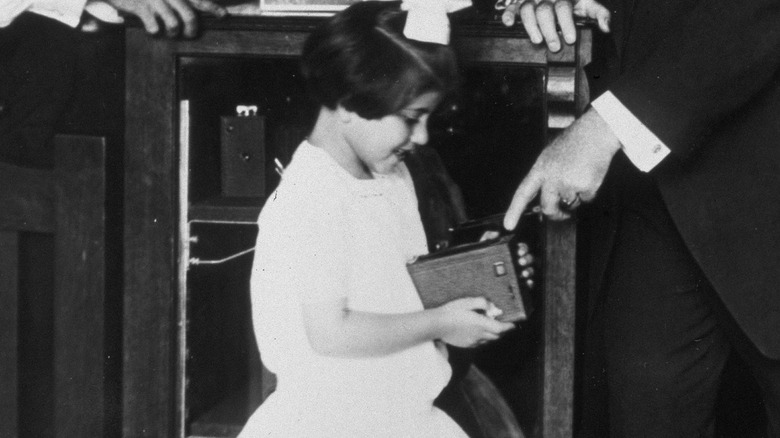The Price Of The Original Kodak Camera Might Surprise You
The first Kodak camera was a game-changer for the art of photography. Debuting in 1888, by modern standards the Kodak was impossibly clunky: large and boxlike, it lacked a viewfinder, offering only a few Vs engraved on the case for sighting, and required photographers to ship the whole camera back to the manufacturer to develop its hundred-exposure roll of film (via National Museum of American History).
"Roll of film" is the key phrase. George Eastman, the cofounder of the Eastman Kodak company and designer of the camera, had already revolutionized photography with the dry plate method, simplifying photo development from a multistage process of careful chemical and light exposure to a single interaction of light on a pretreated surface (via Britannica). In the case of Kodak, a word he coined, he intended to do so again. He pioneered a completely new approach to consumer photos, one that would define generations of cameras and make his new model synonymous with the art of photography.
Buying a revolution
As the National Museum of American History notes, the first Kodak shipped for $25, complete with a blank roll of film. According to In 2013 dollars (that works in 2023 dollars as well), that corresponds to more than $780 in modern dollars as of this writing. Per Shutterbug, that's actually a shade cheaper than an entry-level professional camera today, but of course, a true top-of-the-line camera in today's market costs quite a bit more.
Kodak's first customers were buying something beyond a simple high-quality consumer item, too. They were investing in the future of their medium. Eastman may have made his name in the dry-plate business, but he never stopped innovating. Per Britannica, George Eastman is credited with the invention of flexible roll film, which would define consumer photography until the rise of digital imaging over a century later.
Eastman treated the Kodak camera as a showcase for the flexible roll. The first Kodak may have been clunky by modern standards, but for 19th-century photographers accustomed to wet plates, tripods, and developing pictures themselves, a single portable box with a replaceable roll they could simply send off to be developed seemed almost impossibly compact and convenient. The Eastman Kodak Company's tagline, "You press the button, we do the rest" was literally true – and would become the design brief for virtually every consumer camera that followed.

